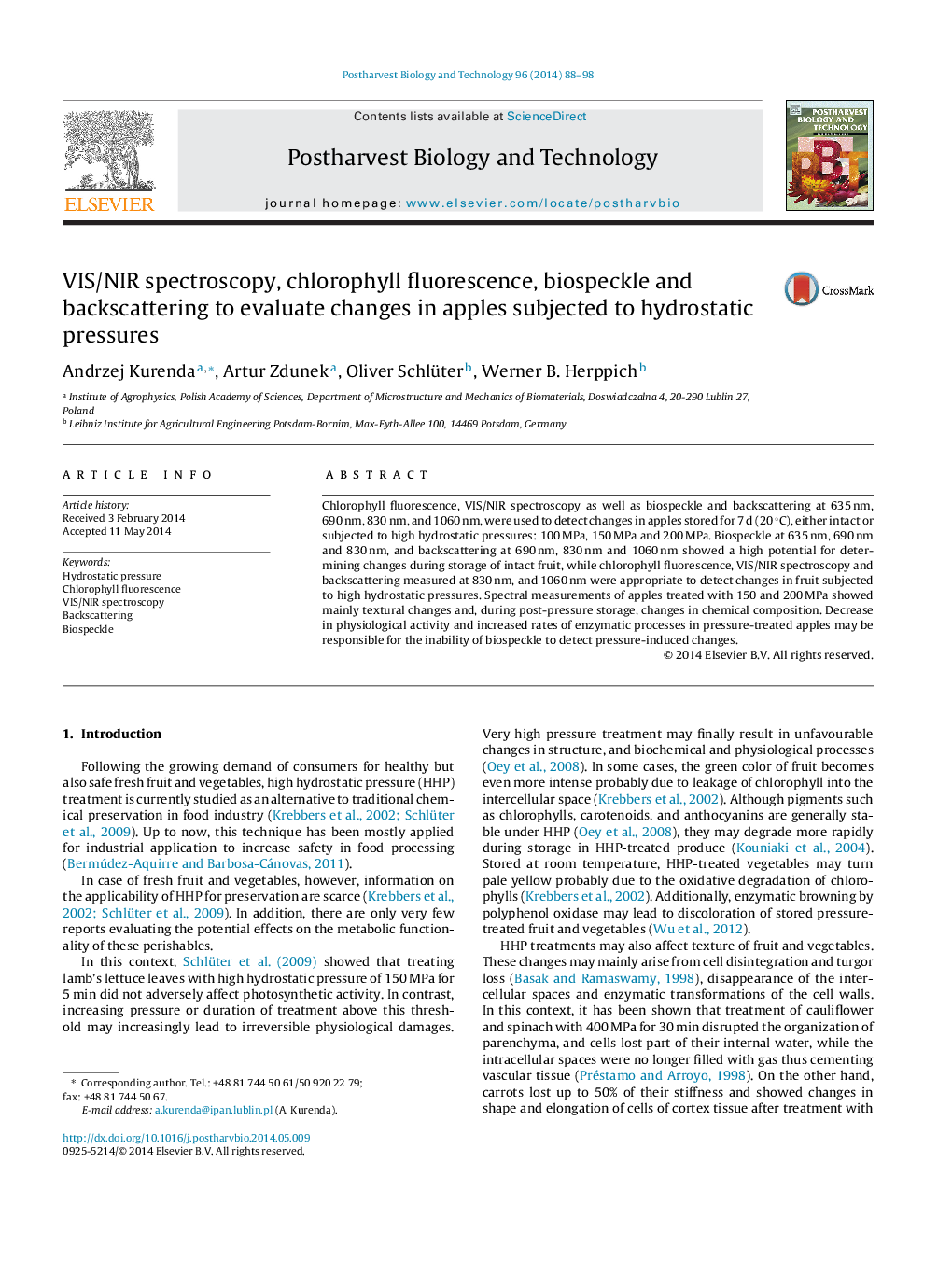| Article ID | Journal | Published Year | Pages | File Type |
|---|---|---|---|---|
| 4518263 | Postharvest Biology and Technology | 2014 | 11 Pages |
•Quality of apples treated with high hydrostatic pressure (HHP) can be evaluated with nondestructive optical techniques.•Apples freshly treated with HHP showed mainly textural changes, and changes in chemical composition during post-pressure storage.•Chlorophyll fluorescence, VIS/NIR spectroscopy and backscattering are appropriate to detect changes of quality of fruit subjected to HHP.•Biospeckle did not detect post-HHP quality changes for the laser wavelengths used.
Chlorophyll fluorescence, VIS/NIR spectroscopy as well as biospeckle and backscattering at 635 nm, 690 nm, 830 nm, and 1060 nm, were used to detect changes in apples stored for 7 d (20 °C), either intact or subjected to high hydrostatic pressures: 100 MPa, 150 MPa and 200 MPa. Biospeckle at 635 nm, 690 nm and 830 nm, and backscattering at 690 nm, 830 nm and 1060 nm showed a high potential for determining changes during storage of intact fruit, while chlorophyll fluorescence, VIS/NIR spectroscopy and backscattering measured at 830 nm, and 1060 nm were appropriate to detect changes in fruit subjected to high hydrostatic pressures. Spectral measurements of apples treated with 150 and 200 MPa showed mainly textural changes and, during post-pressure storage, changes in chemical composition. Decrease in physiological activity and increased rates of enzymatic processes in pressure-treated apples may be responsible for the inability of biospeckle to detect pressure-induced changes.
